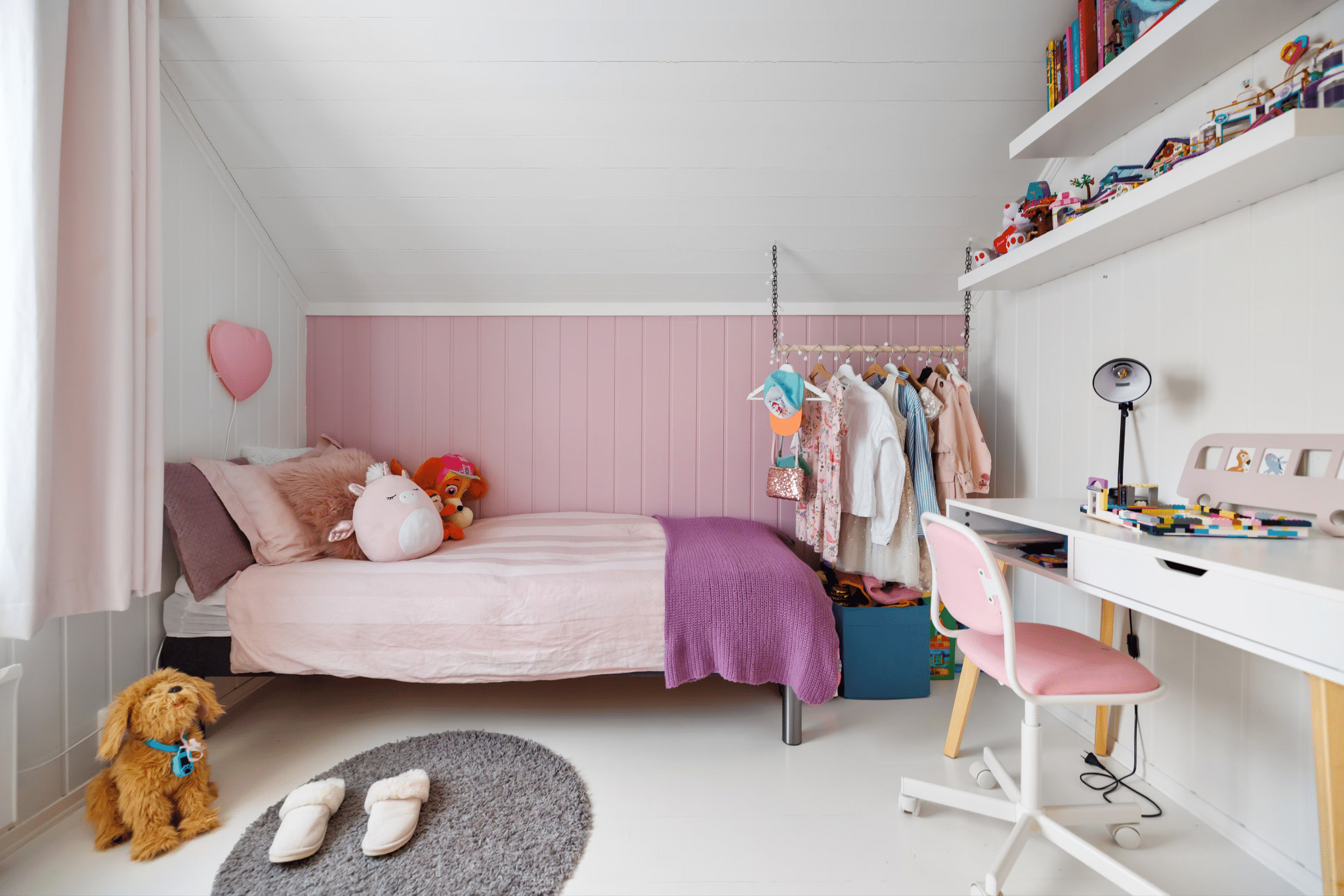So, someone you love is moving in. Maybe it’s a new partner. Maybe it’s Grandma. Maybe it’s your sister and her two kids for “just a few weeks.” Either way, your solo space is about to become a shared space, and that’s a big, beautiful shift.
It’s where love meets logistics. Suddenly, that drawer full of takeout menus and random cords? It might need to become someone’s actual storage. The shoes by the door multiply overnight. And don’t even get started on negotiating throw pillow placement.
Sharing your home brings more connection, more fun, and, yes, a few more dishes in the sink. But with a little planning (and maybe a label maker), you can create a space that works for everyone, emotionally, practically, and even legally.
Before you start clearing out a closet or wondering if you should add their name to the mailbox, or the deed, here are a few things to consider to make the transition smooth, respectful, and full of heart.
Before the Move
Before the bags are packed or the guest room is cleared out, it’s worth having a real conversation, ideally somewhere between “Hey, move in!” and “Wait, where are all my mugs?”
Talking first doesn’t have to feel like a business meeting. It’s just about making sure you’re on the same page. Who’s contributing what? Is this a short-term arrangement or a long-haul plan? Will you split groceries or go full “what’s mine is yours” mode?
And if kids are coming along, it’s even more important to talk about routines, quiet time, screen time, and who’s in charge of bedtime battles (hint: try to tag team when possible).
It’s also a great moment to gently set boundaries. Maybe you’re happy to share your home office, but your snack stash? That might be sacred ground. Clear communication now helps avoid awkward “I thought you knew…” moments later. And the best part? Starting with open dialogue sets the tone for shared respect and a smoother transition from day one.
Start Small

You don’t have to remodel the entire house before someone moves in, but a little thoughtful prep can make a big difference. Start with small, simple steps that say, “I’ve made space for you here.”
That might mean clearing out a drawer in the bathroom, freeing up a shelf in the fridge, or finally sorting through that mystery box in the hall closet. If they’re bringing furniture or keepsakes, figure out where those pieces can live without everything feeling cramped or cluttered. This isn’t just about logistics, it’s about making your loved one feel like they belong, not like they’re squeezing into someone else’s already-finished setup.
And let’s be honest, this can be a good excuse to do a little overdue decluttering. That broken lamp you were totally going to fix? Maybe it’s time to say goodbye. Creating physical space also helps create mental space for both of you, to adjust, adapt, and feel comfortable in this new chapter of shared living.
Create a Space That Feels Like Theirs
No one wants to feel like a long-term guest in their own home. So when someone new moves in, especially with kids, it’s important to help them feel like they belong, not like they’re tiptoeing around someone else’s space.
Start by making room for their personality. Can they hang a few favorite photos? Add their own cozy throw to the couch? Maybe choose the paint color for the shared bedroom? These little touches go a long way toward helping everyone feel at home.
And if children are part of the move-in, it’s worth thinking through how your space can meet their needs too. That might mean adding soft rugs for playtime, choosing storage that’s easy for little hands to reach, or just carving out a small area that’s clearly theirs. If you’re looking for inspiration, these kid-friendly home ideas are a great place to start.
When the people you live with feel like they’re truly seen in the home, everything from dinner time to downtime flows a whole lot easier.

Decor Decisions
Sharing your space also means sharing your style, and that can get tricky when one of you leans coastal cottage and the other is full-on mid-century modern. Suddenly, the throw pillows you loved feel… not so neutral anymore.
Before anyone starts redecorating or hiding someone else’s lamp in the garage, take a breath and make a plan together. Start with shared spaces like the living room or kitchen. What colors, textures, or pieces do you both love? Is there anything that absolutely has to stay, or gently go?
Blending styles can actually be a fun project if you treat it like a collaboration, not a compromise. Maybe your gallery wall meets their minimalist shelves. Maybe your love of color brightens up their neutral vibe. The goal isn’t to win, it’s to create a home that feels like both of you.
And don’t forget the power of a fresh start. If you’ve been meaning to swap out those curtains since forever, now’s the perfect time. New chapter, new look, shared vision.
Bills, Budgets, and Shared Expenses
Let’s be real, money conversations aren’t the most glamorous part of moving in together, but they’re definitely one of the most important. When someone new joins your household, it’s smart to figure out how you’ll handle shared expenses before the utility bills start piling up.
Start with the basics: Who’s paying for what? Will you split groceries? Share the electric bill? Take turns buying household supplies? Some families prefer to divide things evenly, while others go with a “you cover this, I’ll cover that” approach. There’s no one right answer, just what works for your situation.
Even if it feels casual, it helps to write things down. A quick shared note on your phone or a dry-erase board on the fridge can help keep expectations clear and stress low.
Having the money talk early helps protect the relationship, the home, and everyone’s peace of mind. Because nothing says “welcome” like transparency and teamwork.
Consider the Legal Side of Co-Living
While it’s easy to get caught up in furniture arranging and grocery lists, there’s one more piece of the puzzle that deserves attention: the legal stuff. If a loved one is moving in for the long haul, especially if they’re contributing financially or becoming part of your household plans in a meaningful way, it might be time to look at the paperwork.
For homeowners, that could mean thinking about whether to add the new resident to the house deed. One common way to do this is through a quit claim deed, a simple legal document that allows you to transfer a share of the property to someone else without a full sale. It’s often used between family members or trusted partners because it’s quick, straightforward, and doesn’t require title insurance or warranties.
It might feel overly formal, but clarifying ownership or making legal updates can actually strengthen your arrangement. It helps avoid confusion down the road, especially in case of major life changes like marriage, separation, or inheritance planning.
If you’re not sure what’s needed, this is where a friendly chat with a real estate attorney can go a long way.
Setting Boundaries
Even when you love the people you live with, sharing space 24/7 can be challenging. Maybe it’s clashing routines, maybe it’s noise levels, or maybe it’s just that someone keeps leaving their socks exactly where you trip over them.
Setting clear boundaries can make life smoother for everyone. The truth is, even the happiest homes need space for individuality.
Opening your home to someone you love is a significant step, but it’s also an opportunity to build something even better together. With a little planning, open communication, and a whole lot of heart, your shared space can become a home that reflects everyone in it, messy moments, cozy corners, and all.


















